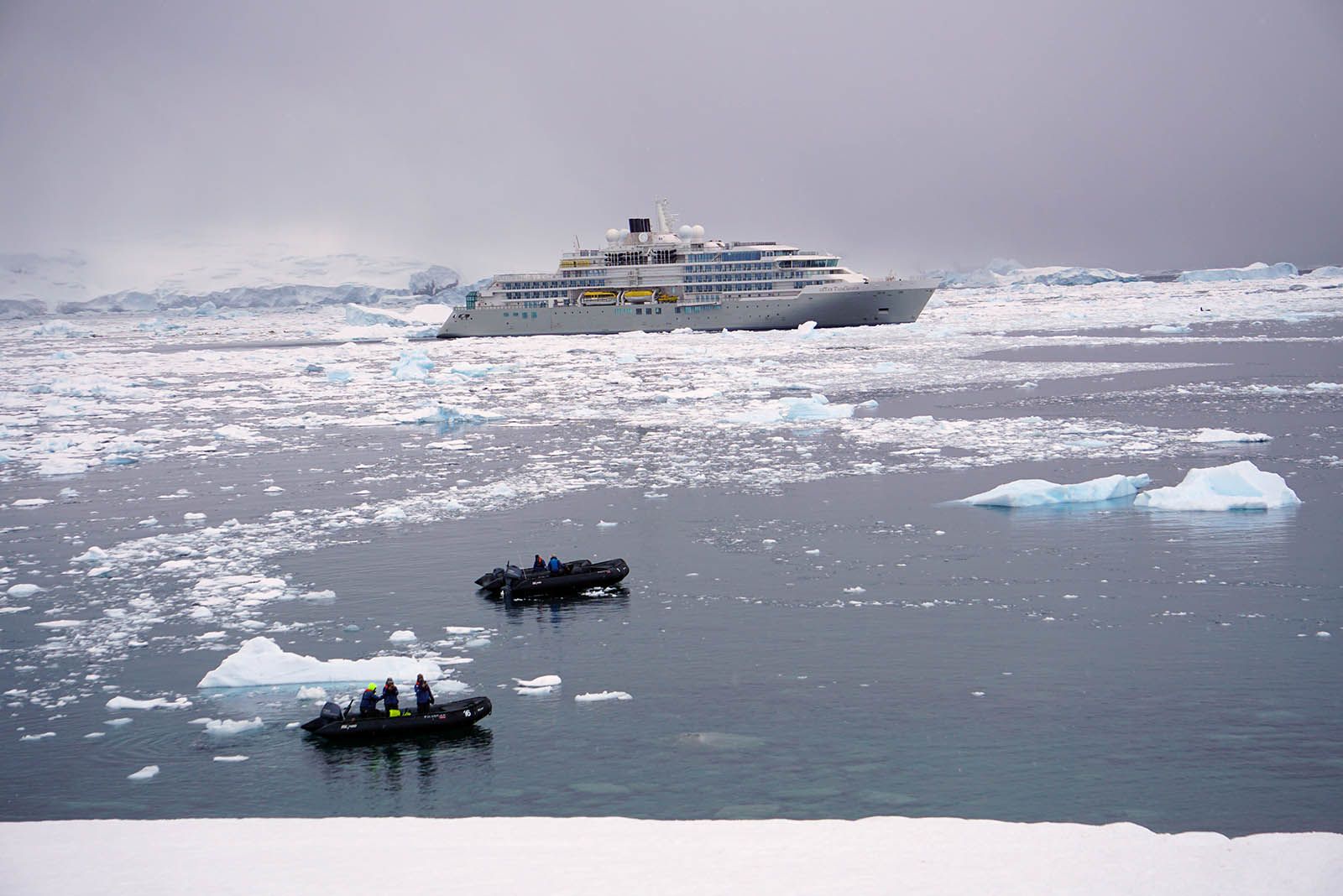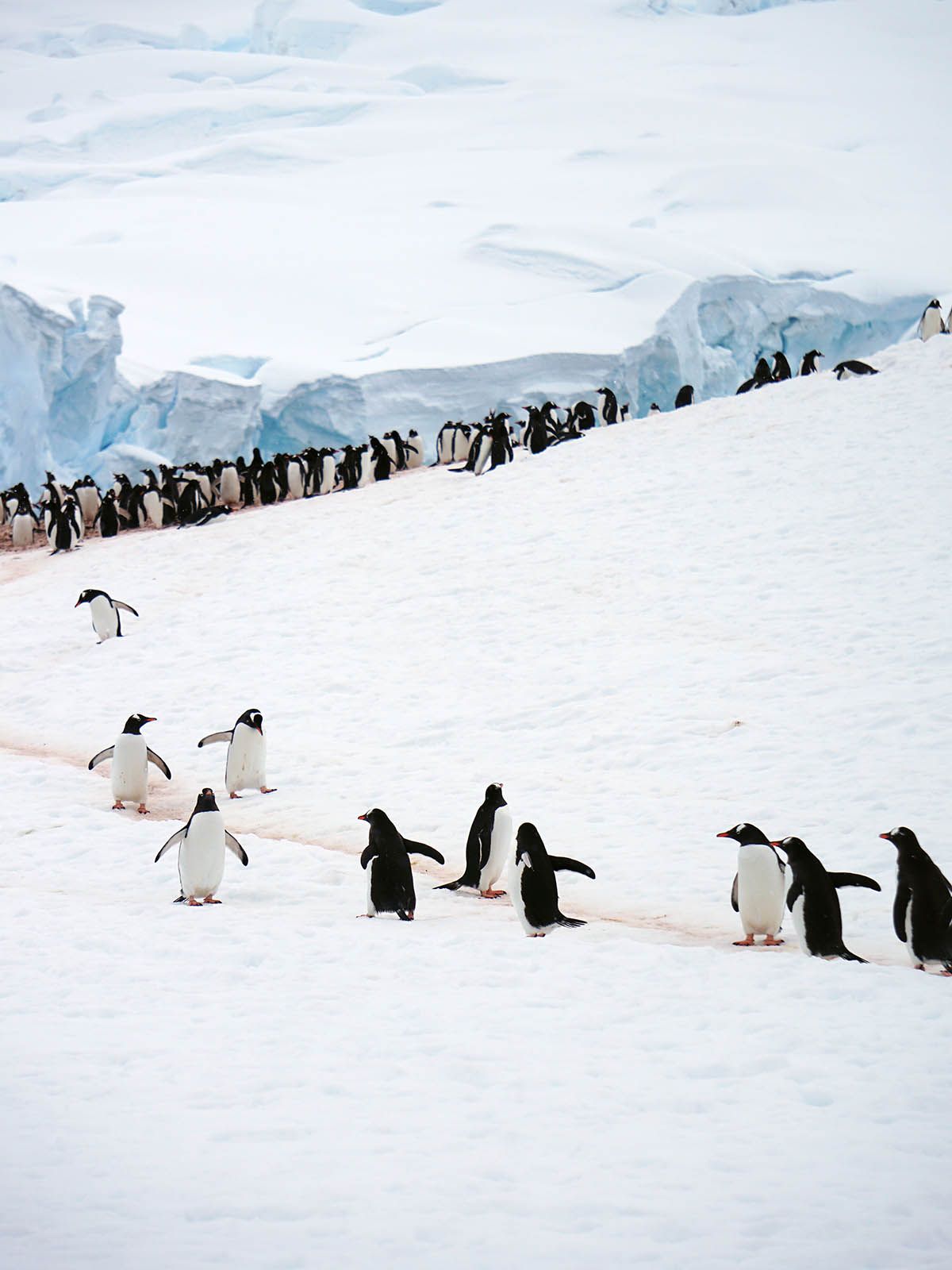As our expedition ship forges ahead toward the great white continent — the coldest, windiest, iciest, most isolated place on the planet — I’m introduced to Antarctica by way of terrifying trivia.
The lowest temperature ever recorded here was a balmy -93.3 degrees Celsius. “This is so cold that if humans were to walk outside, their lungs would hemorrhage. They would not be able to survive,” Alexandra Hansen, one of our chipper naturalists on-board, says of her “favourite continent on Earth.”
I’ve been invited to join the shakedown cruise (a soft launch of sorts) for Silversea’s Silver Endeavour, a new, 200-guest vessel built to brave polar extremes but with all the trappings of a luxury voyage. Among the features: fine dining (caviar and Champagne, anyone?), spa pampering, a pool deck, an al fresco whirlpool.
It’s one of the cushiest routes to the harshest ends of the Earth. I calculate the adequacy of the winter wear I’ve packed while Hansen details the ferocious katabatic winds that can blast at 320-plus kilometres per hour, or thereabouts — hard to measure since they’re strong enough to “destroy the technology in the weather stations.”
The conditions are so forbidding, the landscape is basically ice. No trees or shrubs. There’s only one purely terrestrial animal on the continent: the Antarctic midge, whose survival method entails spending nine months of the year frozen solid.
I’m here, in part, to see for myself the appeal of a destination defined by desolation and inhospitality. As the English expeditionist Apsley Cherry-Garrard wrote in his 1922 travel memoir, “Polar exploration is at once the cleanest and most isolated way of having a bad time which has been devised.” If that’s too subtle, the book’s title is “The Worst Journey in the World.”

Of course, it’s no feat of Shackletonian endurance to glide there aboard a swanky cruise, where one can always warm up with a pisco sour in the Observation Lounge while peering for whales. And we’ve come during the bearable window of austral summer — Antarctic expedition cruises generally run from November to March — to explore the edges of the continent, where it’s mildest.
But before we get there, we’ll have to deal with the high drama of the Drake — the open water between South America’s southernmost tip and the South Shetland Islands — a rite-of-passage for all aspiring to Antarctica. (The loophole: flying to the continent on a charter plane, but what fun is that?) Reputedly the most turbulent stretch of sea anywhere, the smashing waves can leave unlucky cruisers laid up in bed for two days.
In an early sign that Antarctica will defy all my expectations, the Drake Passage is kind to us and mercifully calm. Dawn breaks before 4 a.m., and stepping onto the private balcony of my suite into the bracing air, I thrill to my first glimpse: sculptural slabs of ice adrift on depths unknown, snow-swathed peaks stretching toward pearl-grey sky. Ethereal, elemental.
It’s often said that Antarctica has an extraterrestrial quality (NASA dispatches scientists to the continent because it’s the most Mars-like place on Earth), but to me, it doesn’t feel like another world.
It’s our world. It’s how our blue planet looks when humans haven’t reshaped raw nature to our own ends. The whole continent is a “natural reserve, devoted to peace and science,” as designated by the Antarctic Treaty, the unique international agreement that governs it. No country has colonized it; no nation owns it. People do not live here, save for hardy scientists on research stations.
The appeal of travelling here is seeing the wild beauty of the planet — with (almost) no sign of us.
The inherent contradiction of observing this aboard a luxury expedition ship, designed to bring tourists to a pristine land, isn’t lost on me. Travel to the continent is growing rapidly, and so, too, will the challenges of ensuring everyone treads lightly. “In the 2018-2019 Antarctic season, we had just over 50,000 tourists visiting Antarctica (aboard all ships),” Hansen says. “This year, we’re expecting 105,000.”
And I’m under no illusion that Antarctica is immune to human impact. Last year, a study found that the Florida-sized Thwaites Glacier (ominously dubbed the “doomsday glacier”) is melting faster than previously thought, due to climate change.
But one of the idealistic tenets of Antarctica tourism holds that it’s a net benefit, turning sightseers into ambassadors for environmental protection. So, between all the fun stuff, cruising here comes with a side of education.
Before stepping wellie-clad foot on the continent, we learn the rules, and there are many: Outside gear from home must be decontaminated (all foreign specks vacuumed up for biosecurity). No traces of anything can be left behind (not even an errant tissue flying out of a pocket). No more than 100 passengers can be ashore at any landing site at any given time. Follow the guides and the flagged route (lest a crevasse swallows us whole). Wildlife must be given wide berth — coo at cute penguins only from a distance.

A rookery of gentoo penguins awaits as soon as we disembark from our Zodiac, the adorable tuxedoed seabirds sprinkled all over the powdered slopes, pungent with guano. The comedians of Antarctica, they elicit a giggle with every goofy move — stumbling downhill into a deft belly slide, or tottering, follow-the-leader style, along their “penguin highways” (people must, of course, yield). They’re among the main attractions of an expedition here, and I could watch for days.
I’m surprised to realize they’re utterly unfazed by our intrusion. Why have they no innate terror of humans? I pose the question to Ty, one of the marine biologists. The penguins have no terrestrial predators (the ocean is a different story), he explains. And besides, the people who’ve come here to date have earned a kind of trust. “We don’t chase or harm them. There’s no need to fear us.”
A corner of the world where nature reigns — and humans are welcome only to admire respectfully — is rare and idyllic indeed.
Wing Sze Tang travelled as a guest of Silversea, which did not review or approve this article.
Originally published in the January 28, 2023 issue of the Toronto Star.






